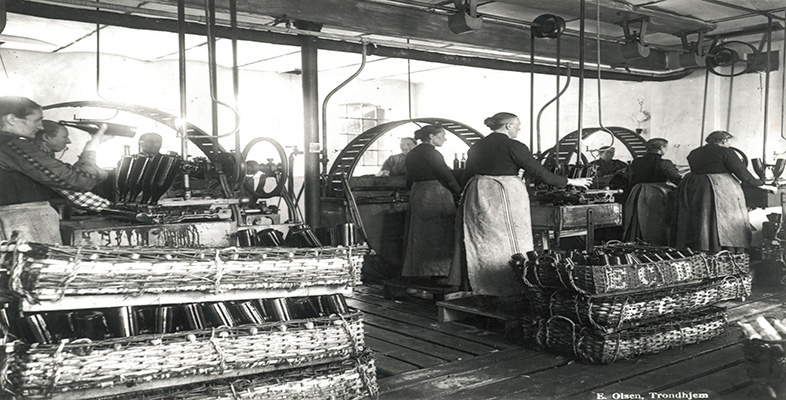Station 2: Onkel Toms Hütte
Click on the link below to view the U-Bahn map. You will find a hotspot for Onkel Toms Hütte station. Click on the hotspot and watch the film that is in the pop-up window. When you have watched the film, click back on your browser to return to this page.
Onkel Toms Hütte [Tip: hold Ctrl and click a link to open it in a new tab. (Hide tip)]
You might have noticed the peculiar name of this U-bahn station, Onkel Toms Hütte, which, directly translated, means Uncle Tom’s Cabin. In the late nineteenth century, a pub landlord named Thomas constructed small huts or cabins in his beer garden for customers to shelter in when it rained. This, combined with the popularity of Harriet Beecher Stowe’s novel, made the play on the name irresistible. Between 1925 and 1932, the site was redeveloped, allowing for the construction of a large housing estate designed by GEHAG, a team of architects led by the famous modernist architect, Bruno Taut. Taut and GEHAG were also responsible for some of the other large housing estates you saw in the film – for example, the famous Horseshoe Estate (Hufeisensiedlung) in Britz, on the southern edge of the city.
Activity 4
To get an idea of what it was like inside these new, modern, living quarters, read Source 1, Otto Steinicke’s ‘Visit to a new apartment’, and answer the accompanying questions.
- What is the general tone of the article?
- Can you identify some of the features of ‘modern living’ which Steinicke draws to the reader’s attention?
- Given the layout of the new apartment he describes, who was expected to occupy it?
Specimen answer
- The tone of Steinicke’s article is overwhelmingly positive. He emphasises all the attractions of modern apartments compared with former city housing.
- Steinicke lists a number of features of modern urban living. Electricity and central heating are perhaps the most obvious. He also places great emphasis on improvements in hygiene. Similarly, he stresses the tidiness of the new apartments – although some residents had brought some of their old furniture with them, many had dispensed with items that tended to clutter their former living quarters, for example, knick-knacks and other superfluous and cheap ornaments.
- Steinicke describes a two-and-a-half room modern apartment. In practice, this consists of a main room (including a kitchen), a bedroom, a child’s bedroom, and a bathroom. Steinicke also tells us that there is a double bed and two small children’s beds in the apartment. It is clear that the designers intended these apartments to be occupied by a nuclear family, ideally two adults and two children. These expectations fit with what we know about demographic patterns in Europe during the interwar years.
Discussion
Also of note in this article is Steinicke’s description of the tortuous process by which the Müller family obtained their modern apartment. Although around 2.5 million modern apartments such as these were constructed during the Weimar period, the majority were occupied by the middle classes, despite the great need for housing for the lower classes identified by the Weimar government. Moreover, the 1925 census revealed that more than 117,000 people were homeless in Berlin (Wasserstein, 2009, p. 214). Throughout the 1920s and 1930s, famous districts such as Wedding, to the north east, and Hallesches Tor, within a short walk of the glittering Potsdamer Platz, remained representative of the slum-like conditions that many of the unskilled and semi-skilled urban labourers continued to live in: families were often crowded into damp and unhygienic tenements that had been rapidly put up in the late-nineteenth century to house a growing industrial workforce. The persistence of similar slums in most European cities has led historian Leif Jerram to question the apparent ‘liberty’ that urban life offered to former agricultural labourers, especially women (Jerram, 2011, p. 103). For an alternative description of living quarters in interwar Berlin, you might like to read Source 2, Christopher Isherwood’s description of the Nowaks’ house in Wassertorstrasse.
When you are ready, we will continue on our tour. Before we head back into the centre of Berlin, we will make one brief stop further down the line at Krumme Lanke, another housing estate constructed in the 1930s, which will expose you to some of the tensions of modernity.
